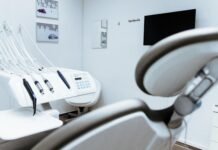Last Updated on July 11, 2024 by Asfa Rasheed
Quick, think about the biggest threats to your health. You may think about cancer or diabetes, and you should.
But an arterial gas embolism (AGE) can occur at any moment, and it can be devastating. Seven embolisms happen for every 100,000 dives. This sounds small, yet as many as 50% of embolisms lead to adverse outcomes like heart attacks.
Yet you shouldn’t panic. You can avoid horrible complications by acting immediately once an embolism occurs.
What is an arterial gas embolism, and why is it so dangerous? Where does a gas embolism come from? How can you treat an embolism, and what tools do you need for treatment?
Answer these questions and you can be part of the solution for embolisms. Here is your quick guide.
Table of Contents
The Basics of an Arterial Gas Embolism
Arteries carry blood from the heart to all other parts of the body. They are very narrow tubes, providing just enough room for blood cells and oxygen to flow. An arterial gas embolism occurs when a gas bubble enters an artery, filling the remaining space and preventing blood from flowing.
Without a constant supply of blood, tissues will die, which can cause organ and nerve damage. If the heart doesn’t receive blood, it can die, resulting in a heart attack. An air embolism is a medical emergency that requires immediate treatment.
Causes
The easiest way to treat a gas embolism is to stop the air source. This makes understanding the causes of embolisms extremely important.
Many divers experience embolisms due to the nitrogen they inhale in their air tank. Nitrogen can pool inside the diver’s tissues, though the tissues can absorb it over time. But if a diver swims to the surface too quickly, the nitrogen will form bubbles that become trapped in the arteries.
A diver can also injure their lungs by holding their breath while they ascend. The air sacs in the lungs can tear, and gas can flow from the air sacs into the blood.
AGE Treatment
Divers can avoid an embolism by rising to the surface slowly. They can go in stages, giving their bodies time to process the pressurized gas they are inhaling. Once they reach the surface, they should stop breathing in pressurized air.
Signs of an embolism include chest pain, muscle pain, and difficulty breathing. Anyone showing these symptoms shortly after a dive needs to head straight into a hyperbaric oxygen chamber for sale.
The chamber will produce a mixture of gases at very high pressure. These gases will put pressure on the arteries, forcing the nitrogen into other parts of the body.
Oxygen therapy takes at least a few hours, and it should not be rushed. If the diver leaves the hyperbaric chamber without a full treatment, the nitrogen bubble may remain in their body and cause complications.
The Essentials of Air Embolisms
An arterial gas embolism is no joke. One tiny air bubble can clog an artery, causing a stroke or heart attack.
Divers sustain embolisms because they breathe in pressurized air and rush to the surface. This can trap the pressurized air deep in their body, producing an embolism.
All divers should be near hyperbaric chambers. As soon as a diver shows symptoms, they should go into the chamber and remain still while they breathe in the pressurized oxygen.
You must stay attentive to all threats to your health. Read more guides to medical emergencies by following our coverage.
Read More: International Relations Undergraduate Programs: Advantages of Studying






















